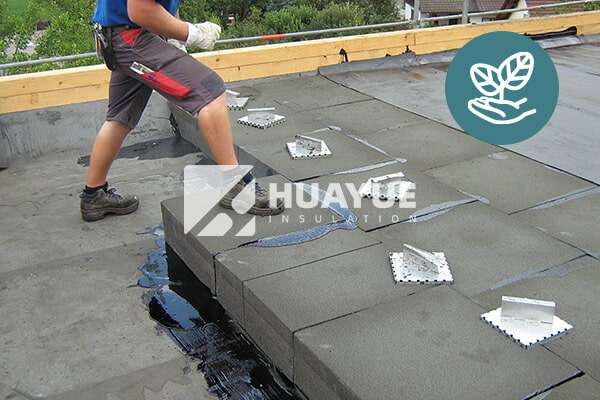Green roofs demand insulation that handles water, load, and roots without fail. Many materials do not last or perform under these tough conditions.
Cellular glass insulation offers waterproofing, compressive strength, root resistance, and lasting performance, making it ideal for sustainable green roof systems and energy-efficient buildings.

Green roofs transform buildings but rely on advanced materials. Ordinary insulation can soak up water, degrade, or fail when plants grow through it. I have seen green roof success stories built on cellular glass insulation. Owners saved money and protected their investment. Let’s check the critical reasons why cellular glass excels for green roofs.
How does cellular glass keep green roofs dry and energy-efficient?
Green roofs hold water for plants and see rainfall year-round. Most insulation absorbs moisture, which ruins its effectiveness. I’ve seen leaks rot organic insulation in just months. Cellular glass is different.
Cellular glass does not absorb water or let vapor pass. It forms a perfect barrier under soil, plants, and drainage layers.

Buildings with cellular glass save on heating and cooling. The insulation stays dry even when roots and soil touch it. This keeps energy performance stable and reduces maintenance.
How does cellular glass stand up to plant roots and heavy rooftop loads?
Plant roots can penetrate and destroy traditional insulation. I remember a project where roots broke through foam and exposed roof decks. Cellular glass resists roots because its rigid block structure is impenetrable.
Its high compressive strength prevents green roof structures from settling or crushing. Maintenance crews find rooftop gardens stay level for years and plants thrive without causing damage.
No gaps form, and roots cannot grow through cellular glass. This is the safest option for long-lasting green roof systems.
Where is cellular glass insulation used in green roofs?
Cellular glass suits extensive, intensive, and semi-intensive green roofs, plus podium decks and roof gardens. I have worked on residential and office projects using cellular glass below soil, planters, and hardscape areas.
Every use benefits from water-tightness, load support, and root resistance. Cities prefer cellular glass for sustainable urban design, lowering building energy costs and extending roof life.
How do you install cellular glass insulation for green roofs?
Crews lay insulation boards directly on the roof deck, seal joints, and protect edges. The cellular glass forms a continuous layer. Then, waterproof sheets, drainage mats, and soil follow.
The process is simple and error-proof. Green roof contractors appreciate not needing extra water barriers or complicated steps, speeding up construction.
Conclusion
Cellular glass insulation provides green roofs with dry, root-resistant support, high load capacity, and stable thermal performance, ensuring sustainable, energy-smart rooftop systems.

